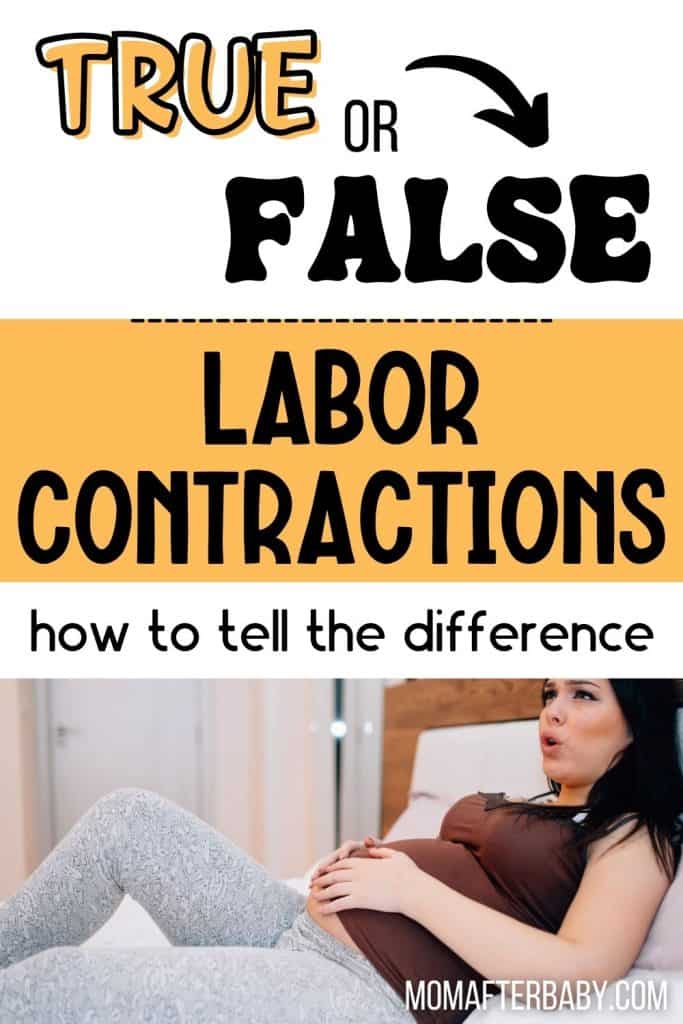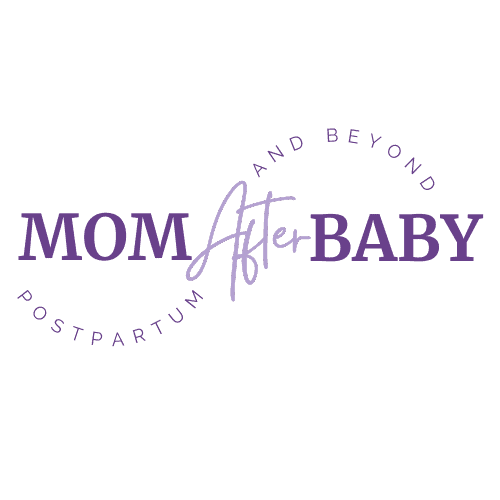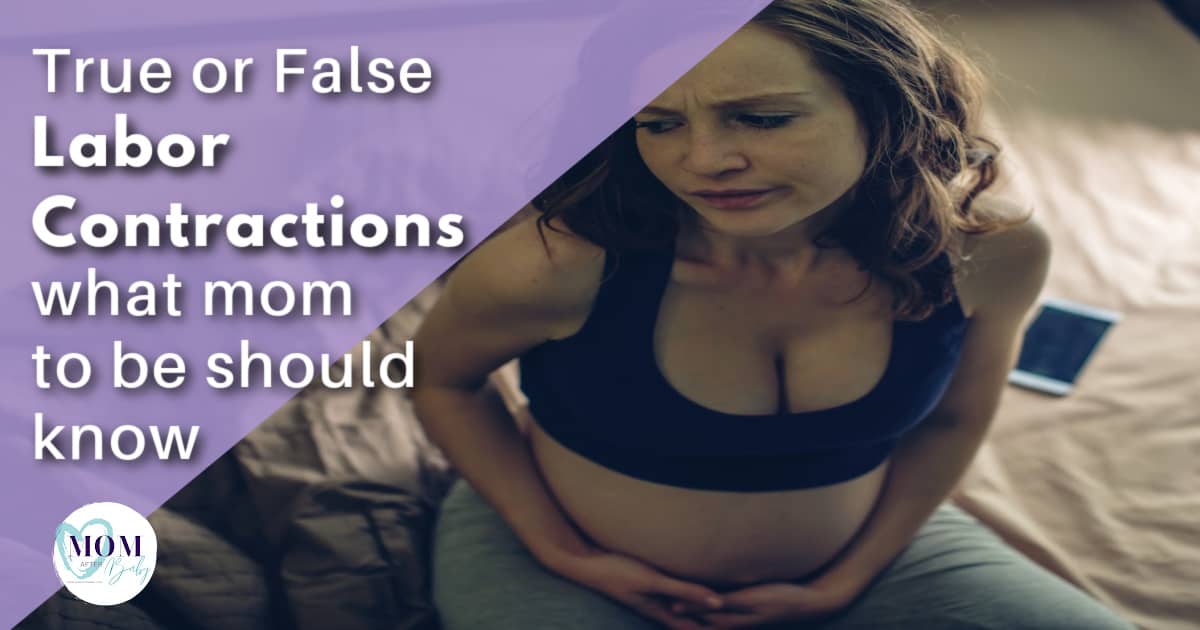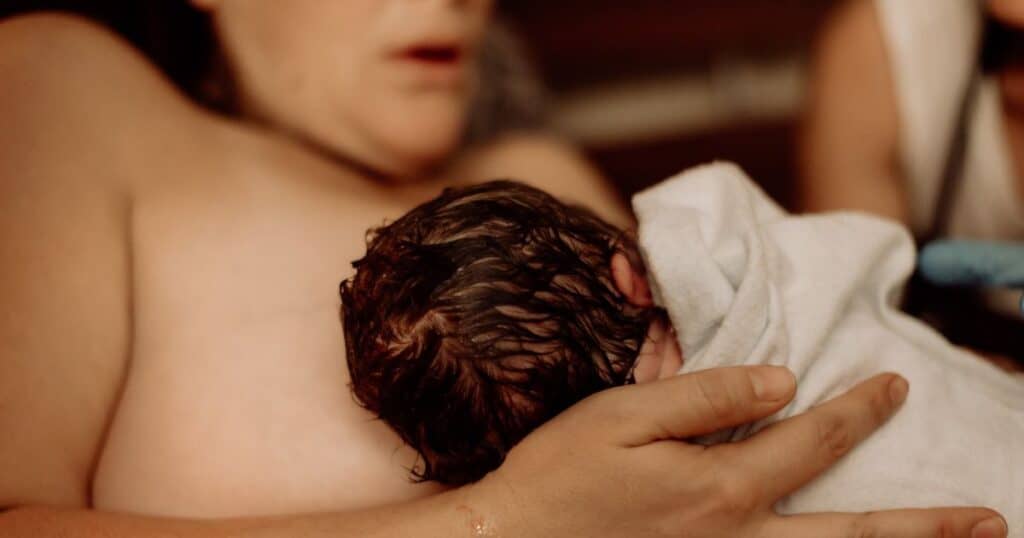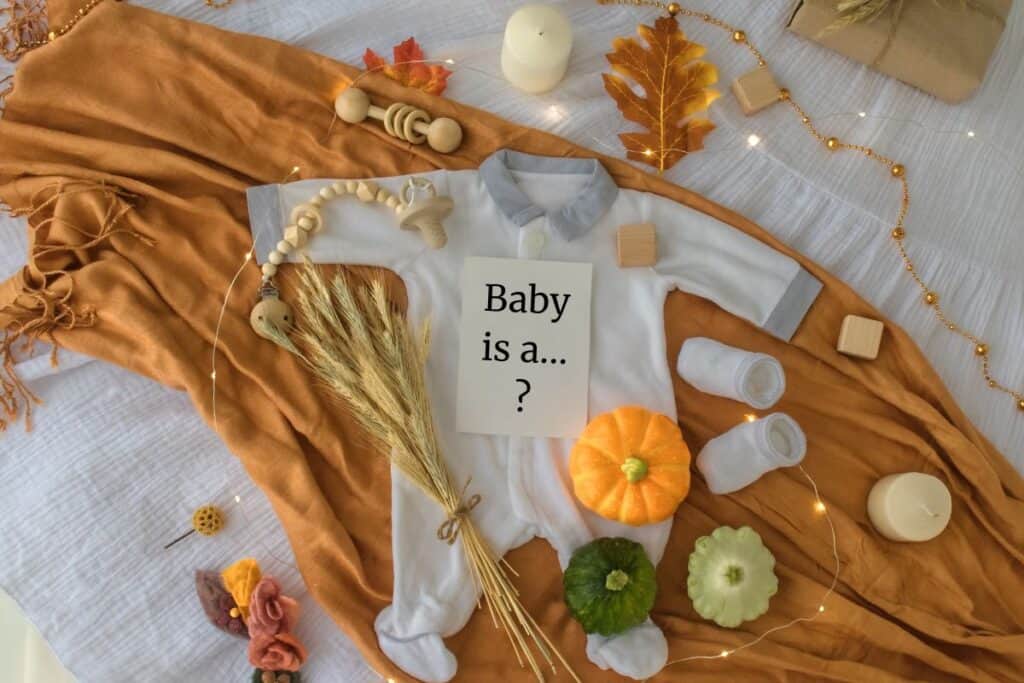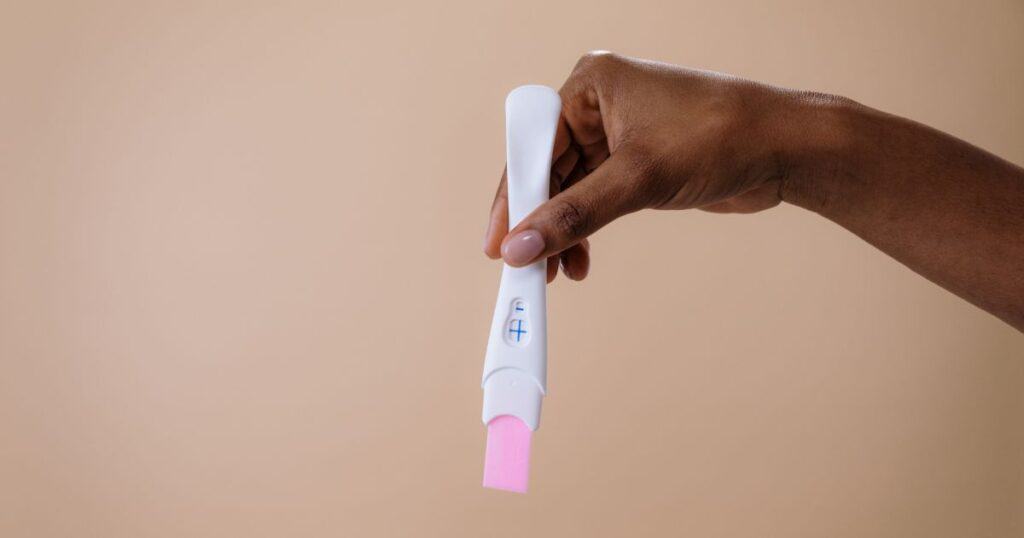Knowing the difference between Braxton hicks and real contractions
This post may contain affiliate links that I may receive a commission from if you click & buy. In addition, the information on this site is NOT intended to be medical advice. See my full policy for more information.
If you’re pregnant, knowing the difference between braxton hicks and real contractions is a crucial part of your pregnancy journey. And, you’re in luck! Today we’ll be breaking down all the differences and similarities between true vs. false labor contractions.
Most pregnant women will go through their entire pregnancy without knowing what “Braxton hicks” contractions are. That is until they feel their belly tightening up and suddenly stopping.
If you’re pregnant, does this sound familiar? Have you experienced any belly tightening or cramping so far?
If you have no idea what Braxton hicks feel like don’t worry, that’s our next stop in this post so keep on scrolling down! And if you don’t have time to finish reading, be sure to PIN this post and come back to it later!
This post contains tips & knowledge from an interview with Heather, a Labor & Delivery nurse, Mama, and blogger/owner of A Life in Labor. All of her tips & responses are based on term, healthy pregnancies. Some of these tips might be different if we are talking about pre-term labor or other issues. To learn more about Heather, check out her author profile at the bottom of this post!
What is Braxton Hicks Contraction and how does it feel?
To put it simply, Braxton Hicks contractions are those that happen sporadically, accompanied by a feeling of “tightening” in your belly and then relaxing again.
If you’ve ever flexed your abs really hard, it feels somewhat similar to that!
It’s believed that Braxton Hicks contractions happen as a way to help your body prepare your uterus for “the real deal”. Basically, they’re non-painful practice contractions. Sounds fun, right?!
But is pain TRULY absent with Braxton Hicks contractions? “Braxton Hicks contractions can certainly be painful but typically are just tightening of the belly. Braxton Hicks contractions tighten and release like waves just like labor contractions but they aren’t as intense. You can usually still talk and walk through them, even though they are uncomfortable,” shares Heather.
How can you tell Braxton Hicks from real contractions?
So if Braxton Hicks are simply “practice” contractions, how can we tell them apart from REAL labor contractions?!
Well, according to Heather, “The biggest difference between Braxton hicks and true labor contractions is that labor contractions are progressive. If you are in labor, your contractions will progress in intensity and frequency. Braxton hicks, on the other hand, will stay about the same or change only slightly over time.“
Another thing worth noting is Braxton Hicks contractions can usually be disrupted by movement, taking a bath, or chugging some water. In fact, another reason some moms-to-be experience these “practice” contractions could be due to dehydration.
This greatly differs from real labor contractions that cannot be “stopped” by movement or chugging water. Once your body decides it’s ready to birth a baby, there’s no going back!
Can stress cause Braxton Hicks?
Based on the research I did when writing this post, there is one study that explains, ” ...there are known circumstances that trigger Braxton Hicks contractions including when the woman is very active, when the bladder is full, following sexual activity, and when the woman is dehydrated. A commonality among all these triggers is the potential for stress to the fetus, and the need for increased blood flow to the placenta to provide fetal oxygenation“.
So whether or not direct stress can cause Braxton Hicks contractions is unknown. However, if the stress could impose stress directly to the fetus, then it’s a possibility.
My personal approach to this would be to avoid stressful situations and triggers as much as you can whenever you can.
Are Braxton Hicks a good sign?
“Braxton Hicks contractions are neither a good or bad sign. Some women never feel or notice Braxton hicks contractions throughout their pregnancy and yet go into labor on their own and have an incredible birth when the time is right,” says Heather.
In fact, as I mentioned, I had them with BOTH of my pregnancies, however, I have 2 mama friends who swear they never felt them at all. EVER! And they both went on to have a successful labor and delivery experience.
“Although Braxton Hicks contractions are technically considered “practice” contractions, you don’t need them in order to go into labor on your own. In fact, Braxton hicks contractions do not cause labor. Plus, It’s absolutely normal and safe to never even feel Braxton Hicks contractions. This is most common in first-time moms and is not a reason to be concerned.” she also adds.
What is a labor contraction?
Now that we know and understand what Braxton Hicks contractions are, let’s dig a little deeper into REAL Labor Contractions. What are they?
Heather states, “A labor contraction is one that is doing work to progress your labor. So, as opposed to a Braxton Hicks contraction, a labor contraction is going to dilate your cervix, thin it out, or bring your baby down. A labor contraction can feel like really intense period cramps that start in the front and work it’s way to your back, hips, and pelvis.“
Depending on the stage of your labor, some moms may also experience a “bloody show” or their “water breaking” accompanying those contractions.
What does a labor contraction feel like?
As mentioned above, labor contractions are commonly described as ‘really intense period cramps’. The location of this pain can begin in the front of your low belly and radiate to your back, hips, and pelvis.
You might also feel that intense tightening of your uterus (typically more intense than a standard Braxton Hicks contraction).
When you get to the point of not being able to walk, talk or distract yourself from the pain/discomfort, those are pretty solid signs you’re experiencing a TRUE labor contraction.
How long do labor contractions last?
Unlike our sporadic friend, Braxton Hicks, which can last 30 seconds to 2 minutes with no pattern in place.
True “labor contractions typically last no less than 60 seconds and no more than two minutes at a time. But overall, labor contractions will last anywhere from a few hours to a couple of days, depending” says Heather.
When should I start timing my contractions?
According to Heather, “You should start timing your contractions if you have been noticing them frequently and painfully. There is usually no reason to time contractions that are uncomfortable but not painful or contractions that are very far apart.”
I remember my OB also giving me this exact same advice. Unfortunately for me with my first pregnancy, I never had the chance to experience them on their own as my water was leaking, leading to me needing to be induced.
However, this second time around, I plan to follow this advice to a T considering that most 2nd time labors run a bit quicker than the first.
Heather also adds, “Basically, time the contractions that are demanding your attention and that cannot be ignored. Repetitive, frequent, painful contractions should be timed. Otherwise, try to put them out of your mind and rest. Labor will come when it’s time.“
Knowing the difference between Braxton hicks and real contractions recap:
- Braxton Hicks are considered “practice” contractions that do NOT cause labor.
- You can typically disrupt Braxton Hicks contractions by chugging water, changing positions or getting into a bath.
- It is perfectly normal to NOT feel a Braxton Hicks contraction throughout your pregnancy.
- Braxton Hicks contractions tend to feel more like a “belly tightening” (but can sometimes be associated with some pain, though it’s less common).
- Labor contractions generally feel like an intense menstrual cramp that can radiate to your back, hips, and pelvis.
- True labor contractions will continue to progress and become more frequent, thus resulting in cervical changes or baby being pushed down.
- “Call your provider or the labor and delivery unit that you plan to deliver at when you think that it’s time to come in — typically when you’ve been having painful contractions every 3-5 minutes for 1-2 hours, each lasting at least a minute” says Heather.
This article was updated in December 2021
Read more pregnancy articles here:
>> How to time contractions the right way (Heather’s Blog Post)
>> Definite signs labor is 24-48 hours away, are you ready?
>> New Mom Hospital Bag Checklist Printable (for mom, dad, and baby)
10 Natural Childbirth Coping Techniques That REALLY Work
Give the Best Pregnancy Gifts for First Time Moms
How Protein Can Boost Energy Levels for Pregnant Moms
15+ New Year Baby Announcement Ideas
10 Festive November Gender Reveal Ideas in The Fall
What Not to Do Before Taking a Pregnancy Test: Do’s & Dont’s
Essential Household Items to Stock Up On Before Baby

About: Heather
Labor & Delivery Nurse + Owner/Blogger at A Life in LaborHi, I’m Heather. I am a Labor & Delivery nurse and a mom of two little boys. I am also the owner and founder of A Life In Labor, a mommy blog dedicated to helping new moms overcome the labors of new motherhood.
Connect with Heather by visiting her blog or social pages below:

